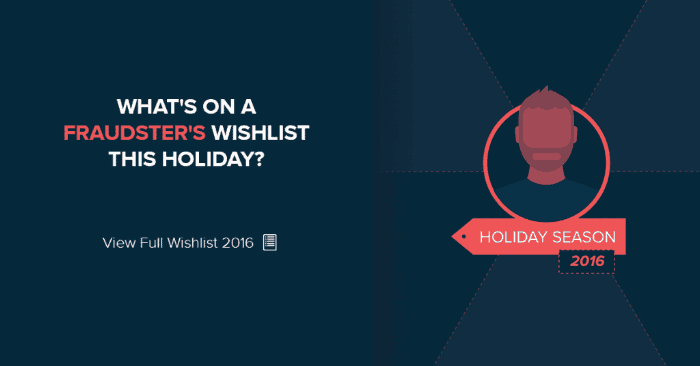It’s beginning to look a lot like Christmas, and online and mobile shopping are flavor of the month. Unfortunately, that’s the case with some shoppers who don’t have holiday cheer in their hearts: fraudsters. Just like with legitimate customers, the items on the fraudster wishlist change year on year as some goods become more popular and others less so.
We took a look at the data we’re seeing this year to tell you which items are being targeted in 2016 by buyers who are definitely naughty, not nice.
Liking the Life of Luxury
It’s certainly not news that crooks love luxury items. For many reasons, luxury goods are like catnip for fraudsters – especially during the holidays. They’re valuable and easy to resell, meaning the balance between the effort required for the theft and the potential payoff creates great ROI for the criminal.
Last year we saw a pattern of fraudsters doing their best to steal the most expensive luxury items. It might have been a bit more work, but that was well worth it when they were after (for example) a watch worth $30,000.
Luxury retailers know this. Since fraud prevention is in some ways rather like a game of cat and mouse, they’ve adapted based on what they learned last year and high value transactions are even more closely scrutinized than before.
The problem with fighting fraud, of course, is that the fraudsters fight back. Pricey items are now harder to steal? No problem, they’ll go after mid-range ones. Forter’s system picks up changes like these extremely quickly, and adapts to new patterns fast, but many merchants will find themselves taken by surprise and paying the price when chargebacks start coming in in the new year.
Why Michael Kors and Tissot are Fraudster Favourites
This year, fraudsters are targeting luxury items that are valuable, but less expensive than the top line picks they went for last year. Think Michael Kors, Ralph Lauren’s “Ricky” bags, or Fossil and Tissot watches, and you’ll have an idea of what they’re after.
The dollar take-away might be smaller per item, but the lower price tag means that they’re easier to steal since retailers are less suspicious. Moreover, these kinds of goodies are also widely popular for both gifting and self-gifting. If you’re a fraudster, that means it’s both easy to find many places to steal from and easy to find a willing market to resell to afterwards. So that’s smaller amounts every time, but a much easier process – and highly repeatable. You can see why they’re loving this look.
The Even Sneakier Fraudster
Some fraudsters are even further ahead in their business model. They don’t just steal and look for someone to sell the goods on to, they make the sale first and then steal to order. That way, their gain is assured.
Even nastier than that, the site or app which they use to make the sale in the first place will often have been designed to steal the customer’s details as well. The site, of course, will have been carefully designed to look entirely legitimate. It may even be a spoof version of a genuine site. There are online criminals who specialize in providing exactly that service, in fact. For a fraudster this really is a luxury experience – smooth, fast and all benefit, at someone else’s expense.
Intrigued?
If you enjoyed this sneak peek, and would like to find out:
- Why fraudsters are suddenly into refurbished electronics
- Why they’re purchasing SEO
- How they’re making money out of refugees
and more, check out the infographic or the full Fraudster Wishlist 2016 eBook.



